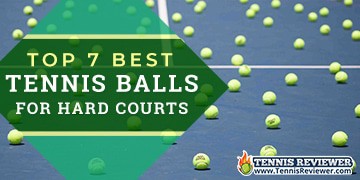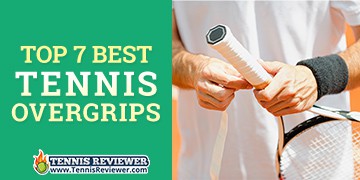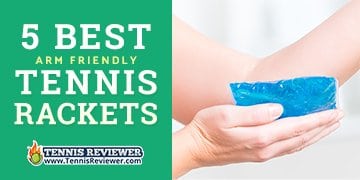The decision on whether to use string dampeners on tennis strings is subjective. For some players, playing without one can affect their on-court performance. Out of curiosity, others may have tried but did not feel any obvious improvement in their game. In contrast, the rest may not have even seen one before.
This article walks you through the basics to help decide if string dampeners are right for you.
Table of Contents
What is a String Dampener?
String dampeners are also referred to as tennis racket vibration dampener. They are a small device that dampens or reduces string vibration caused by hitting the ball. They are manufactured from some kind of rubber material and commonly come at a low cost. They can sport a wide variety of brand logos and designs.
Dampeners come in two different types. Buttons and worms. Buttons are the more common option of the two. They are easy to install and have a simple design. Worm dampeners come in several shapes and sizes and are woven between main strings.
What do String Dampeners do?
The main use of these rubber devices is to reduce the vibration of the string. The string dampeners do not allow the high pitch sound to pass through the dampener. This results in a lower-pitched sound to replace the “ping” as the racket hits the ball.
Players who want a tiny ping sound should use buttons. Those who’d rather have pock sounds use worms, and those who don’t mind the ping sound use nothing.
Players who use string dampeners may notice a slight difference in feel and touch when hitting the ball. And whether you decide that the change makes you better or worse at your game is a personal judgment.
Do String Dampeners Help with Racket Vibrations?
Research and studies have disproved the effectiveness of string dampeners as shock absorbers. According to science, these string dampening devices are too small in relation to the rackets to absorb a significant level of shock. This means string dampeners will not help players with hand and arm discomfort.
Players who suffer from tennis elbow should look into other means of achieving more comfort when playing to avoid further injury.
Do the Pros Use String Dampeners?
The majority of top tennis pros continue to use string dampeners. Examples include Novak Djokovic and Rafael Nadal. On the other hand, Roger Federer and Serena Williams do not use string dampeners.
How to Install a String Dampener
In this section, we will show you how and where you should install your string dampeners.
Where Should String Dampeners be Placed?
According to the USTA’s official tennis rules, string dampeners must be installed “outside the patterns of crossed strings.” It is not recommended to place the dampener at the top of the racket.
Button Dampeners
Button dampeners are placed in-between the two center main strings (the strings going up and down).
Insert the dampener into one of the main strings. Then move the second string and push the dampener into place. Next, slide the dampener up until it is seated against the bottom cross string.
Worm Dampeners
Worm dampeners are woven through the main strings to stay in place.
Hook one side of the dampener to one of the far end mains. Then, weave the worm dampener through the strings until it is fully extended. Attach the second hook.
Our Picks of the Best String Dampeners
There are countless options when it comes to string dampeners. Our goal here is to help you sort through all of the noise and point you to our picks of the best string dampeners.
Our Pick: Best Beginner String Dampener
- 🎾 3 DAMPENERS, EACH WITH UNIQUE CHARACTERISTICS: this racket dampener set offers a choice of different sizes, shapes and densities so you can choose between dampening, feel and stiffness to suit your playing style.
Our Pick: Best Button String Dampener
- Absorbs vibrations for improved feel and arm comfort
Our Pick: Best Worm String Dampener
- EXTREME DAMPENING: Contacts all critical main strings for maximum reduction in vibrations.
Conclusion
String dampeners are somewhat of a misnomer. They are installed on the tennis strings to quiet the vibrations. This results in a change in the sound as the string bed hits the tennis ball. It is the strings that the device affects, and it does not impact frame shock nor prevent arm injury.














